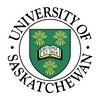Explore all the information on
Swine nutrition
Pigs require a number of essential nutrients to meet their needs for maintenance, growth, reproduction, lactation, and other functions. However, factors such as genetic variation, environment, availability of nutrients in feedstuffs, disease levels, and other stressors may increase the needed level of some nutrients for optimal performance and reproduction.
Swine require six general classes of nutrients: water, carbohydrates, fats, protein (amino acids), minerals, and vitamins. Energy, although not a specific nutrient, is an important nutritional component and is primarily derived from the oxidation of carbohydrates and fats. In addition, amino acids (from protein) that exceed the animal’s requirements for maintenance and tissue protein synthesis provide energy when their carbon skeletons are oxidized. Antibiotics, chemotherapeutic agents, microbial supplements (prebiotics and probiotics), enzymes, and other feed additives are often added to swine diets to increase the rate and efficiency of gain, to improve digestibility, and for other purposes, but they are not considered nutrients.
Pigs require a more concentrated diet and should be fed a less-fibrous feed than cattle, sheep, or horses. As they grow, their nutritional requirements change and the diet should meet their needs in various phases of growth and stages of production.
1. Introduction Liquid feed has become a popular feeding system for pigs in many European countries. It consists of a blend compound feed (mixture of raw materials “as fed”) with water or liquid food-industry co-products, in a central tank in the pig unit, before delivery through a pump-and-pipes mechanical system [1,2]. Liquid feed contains about 700–800 g of water per kg, since the capacity of the pump-and-pipes devices determines the upper limit for dry...
Comments : 0
Recommendations: 0
Animal breeding is an old practice developed by humans for the production of dairy foods (cattle), transport (horses), rodeo or recreational events (dogs and bison for instance). The task of domestication and/or specific animal breeding at the industrial level includes controlled mating, successful reproduction of captive species and mass production of selected strains for our own consumption or pleasure. This dates back to the Neolithic period (about 7000 BC) when the men started to settle...
Comments : 0
Recommendations: 0
Dr. Cassie Jones (Kansas State University) discusses feed control and virus prevention, in this Swine It interview with host Márcio Gonçalves....
Comments : 2
Recommendations: 1
Dr. Rommel Sulabo (University of the Philippines Los Baños) comments on the characteristics of this fiber source in a Swine It interview with host Márcio Gonçalves....
Comments : 1
Recommendations: 0


Feed Conversion Ratio: Unveiling the Secrets of Sustainable Livestock Production
Suggested link
Dr. Robert Thaler (South Dakota State University) expressed his concerns about the progress and priorities regarding innovation, in this Swine It interview with host Márcio Gonçalves....
Comments : 0
Recommendations: 0
USSEC is pleased to present our regional flagship technical event for 2021 – ...
Comments : 1
Recommendations: 0


APIs and Vitamin MARKET - The weak demand for the APIs
Suggested link
1 | PART 1: WHAT DO WE KNOW?
1.1 | Introduction
Effective biosecurity protocols are essential towards protecting the health status of swine farms. In the United States, tremendous resources have been invested to reduce the risk of viral pathogens, such as the entry of porcine reproductive and respiratory syndrome virus into susceptible populations. Protocols including shower in-shower out, transport...
Comments : 0
Recommendations: 1
Functional proteins play a powerful role in performance and maintaining the immune function of animals
Sao Paulo, May 4, 2021 – Spray dried plasma (SDP) is a functional protein ingredient that has been part of animal nutrition since the 1980s, when the first research was conducted with scientists at Iowa State...
Comments : 0
Recommendations: 0
What are the best feeds you can feed your pigs? ...
Comments : 0
Recommendations: 0
Dr. Thomas Crenshaw (University of Wisconsin) talked about adequate pig growth in a clip from this Swine It interview with host Márcio Gonçalves....
Comments : 1
Recommendations: 0
Dr. Mariana Menegat (Holden Farms) discussed phases in pig nutrition in a clip from this Swine It interview with host Márcio Gonçalves....
Comments : 1
Recommendations: 1
Introduction: The application of enzymes in swine nutrition has gained traction over the past several years. Exogenous enzymes have become an integral part of commercial poultry feed for enhancing the efficiency of nutrient utilization, thereby reducing the cost of production, and improving growth performance. In swine, the application of exogenous enzymes is not yet a common practice, which demands for nutritional matrix validation and further investigation for each type of...
Comments : 0
Recommendations: 0


Feed Conversion Ratio: Unveiling the Secrets of Sustainable Livestock Production
Suggested link
Listen to Professor Bruno Silva from the Federal University of Minas Gerais in Brazil to know more! This video is part of a series of short educational videos, lasting from 5 to 7 min, that help to better understand the feeding behavior of sows and ways to modulate it.
...
Comments : 3
Recommendations: 6
The use of feed flavors offers the opportunity to improve the lactation and voluntary feed intake of sows. Listen to Professor Bruno Silva from the Federal University of Minas Gerais in Brazil to know more!
...
Comments : 0
Recommendations: 1


APIs and Vitamin MARKET - The weak demand for the APIs
Suggested link
Dr. Steve Pollman and Dr. Joe Crenshaw discuss how the performance of the entire system begins and ends with the sow. Learn the importance of using benchmark data to develop solutions that reduce variation and improve productivity in today's sow herd....
Comments : 0
Recommendations: 0
PRRS continues to be a devastating problem, costing the swine industry hundreds of millions of dollars annually. Reducing the impact of PRRS can require a multifaceted approach. In a study conducted by Demeter Veterinary Services, Inc. / Groupe Cèrés, weaned pigs fed 100% bovine plasma significantly outperformed pigs fed a control diet without plasma. With today's price of 100% bovine plasma, producers can significantly increase net...
Comments : 0
Recommendations: 1
1. Introduction Combining different feedstuffs to formulate swine diets is essential for the supply of amino acids (AA), energy, and other nutrients necessary for optimal growth and nutrient utilization and production. While the main goal of diet formulation is meeting nutrient requirements, the impact different feedstuffs have on nutrient utilization (e.g., nitrogen retention) and intestinal physiology (e.g., gut health) of the pig also need to be considered. For instance,...
Comments : 2
Recommendations: 0
The objective of this experiment was to determine the effects of dietary crude protein (CP) content and crystalline amino acids (CAA) supplementation patterns on the growth performance of weaned pigs under clean (CSC) or unclean sanitary conditions (USC). One hundred forty-four piglets (6.35 ± 0.63 kg BW) were housed under CSC or USC for 3 wk and assigned to 1 of 3 diets: a high CP (HCP; 21%) and two low CP (LCP; 18%) diets supplemented with 10 crystalline indispensable amino...
Comments : 1
Recommendations: 1
1. Introduction The Dutch Ministry of Economic Affairs would like to see an increased number of pig production chains addressing improved pig welfare. The sustainable pork chain called “De Hoeve” wants to be at the forefront in taking the next step in the area of animal welfare. This step consists of no longer docking the tails of the piglets. Up to now, not docking in conventional pig husbandry increases the risk of tail biting [1,2]. More enrichment, space (low...
Comments : 0
Recommendations: 0
The impact of heat stress on pigs is wide-ranging and costly, often causing serious growth and reproductive problems while also increasing the likelihood that affected stock will succumb to illness or disease more readily than non-stressed animals. In...
Comments : 0
Recommendations: 0


























